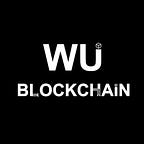50 Tokens that Coinbase is going to list, who are they? Why controversial?
As of today, there are 170 tradable tokens on Coinbase, which is a relatively small number compared to other major exchanges. However, the decrease in quantity has not led to an increase in quality, as Coinbase’s list omits many of the top 50 tokens by market cap, such as BNB, LUNA, XRP, NEAR, FTT, XMR, etc., while there are many outside the top 500 by market cap, such as SHPING, SUKU, GODS, GYEN, PLU, etc.
According to the latest roadmap, Coinbase will list a large number of tokens in the second quarter of this year, of which 50 are clearly listed. The scale of the new token listing is large, but the quality is, as always, poor. This article takes a look at these new tokens.
In the table, the first 45 belong to the Ethereum ecosystem and the last 5 to the Solana ecosystem. Among them, only 5 have a market cap of over $100 million: BUSD, BIT, C98, GUSD and STRK, while 15 have a market cap of less than $10 million. Not only that, Coinbase is also going live with 10 tokens issued before 2020, of which, except for BUSD, the rest have probably faded out of sight.
Here is a brief introduction to some of the “delisted” tokens, sorted by market cap.
ELA (Elastos), dedicated to cloud ecosystem infrastructure, saw a 98% price drop in 2018 and hasn’t been up since.
MATH (Math), in the wallet category, had raised $20 million with unknown investors. The price peaked last March and is now down 90%.
PRQ (PARSIQ), working on building a Web3 data platform to monitor specific on-chain activities, received $3 million in investment led by Solana. The price peaked last April and is now down 88%.
ALEPH (ALEPH), in the storage category, had raised $10 million from Stratos Technologies, Zee Prime Capital, NOIA Capital and others.
NEST (NEST), in the prophecy machine category, where prices fell 90% in 2020 and cannot recover after a setback.
KEY (SelfKey), with unclear category, was launched in January 2018, the price of which fell 95% in 2020 and cannot recover after a setback.
DREP (DREP), committed to building “connectors” and “toolkits” based on blockchain technology, has seen its price fall by 88%.
LOC (lockchain), the category is not clear, the development roadmap is more similar to the no-token blockchain. It has raised $4.1 million, and the investor is unknown. As an old project issued in 2017, the token price reached another record high last year and performed well.
HOPR (HOPR), dedicated to privacy and security infrastructure construction, received $1 million in funding led by Coinan and AU21. The price peaked in March last year, and then fell off after 519.
STC (student coin), is dedicated to building a “tokenization” platform, the price of which hit bottom last July and has not recovered since
SWFTC (SWFTC), is a cross-chain bridge project, which is a very cutting-edge technology in 2018. The price “went to zero” in August 2018 and has not improved since.
ABT (Arcblock), an infrastructure dedicated to building interoperability between protocols, developed by an all-Chinese team. The price fell 95% in 2018 and has not recovered since, with no volatility even in the current bull market.
TONE (te-food), the category is unclear, similar to no-token blockchain.
JUP (Jupiter), the earliest of the new listing token, the price has not fluctuated much since it “went to zero” in 2019.
PMON (Polychain Monsters), peaked when it launched, did not even rise in GameFi Summer as a GameFi project.
Most projects with a market cap of less than $10 million are not worth mentioning. WAMPL, a wrapped version of Ampleforth, has a real market cap of nearly $90 million, which is out of the scope of this discussion. Of the remaining 14 tokens, only three projects with well-known VC investments are worth noting. All three are part of the DeFi and less than a year old, so they may still have development potential.
MARSH (Unmarshal), which received $2.6 million in funding led by NGC, is dedicated to building a multi-chain data analysis platform. The price never rose again after the 519.
DFX (DFX Finance), which received $5 million in funding led by FBG, Polychain and CMS, is focused on building a stablecoin forex trading platform. The price has fallen 88% since peaking last November.
APT (Apricot), a farming-type DeFi deployed on Solana, raised $4.8M in funding led by NGC, DFG, and CMS. The price has fallen since its launch last November and is now down 90%.
Finally, here is a quote from the audit of new token listing on Coinbase.
Our goal is to list every compliant asset possible. In our ideal world, Coinbase would simply list every asset that met the requisite legal and cybersecurity standards, while giving our customers as much information as possible to make educated investment decisions. Being listed on our exchange would not be considered an endorsement; it would simply be an indication that the asset had met our listing standards.
Follow us
Twitter: https://twitter.com/WuBlockchain
Telegram: https://t.me/wublockchainenglish
